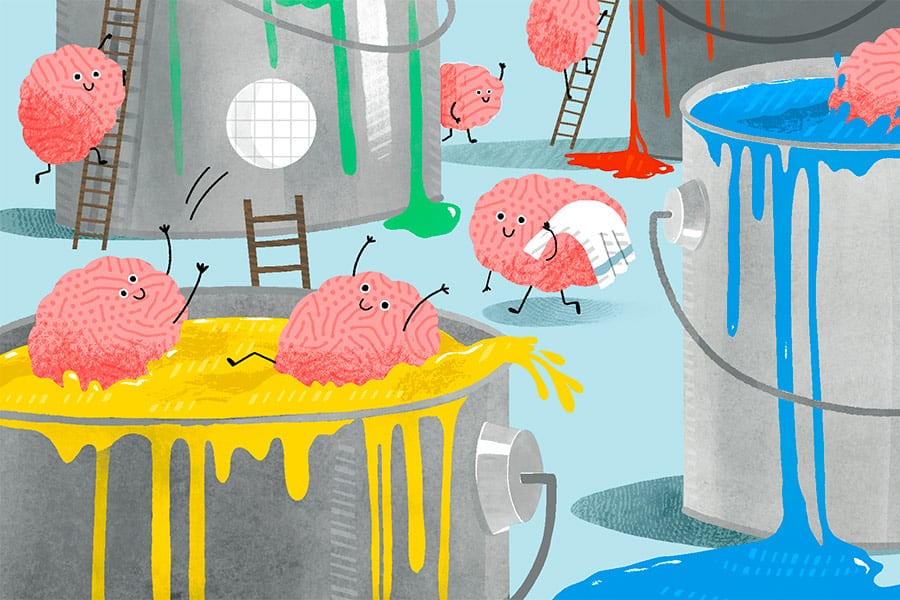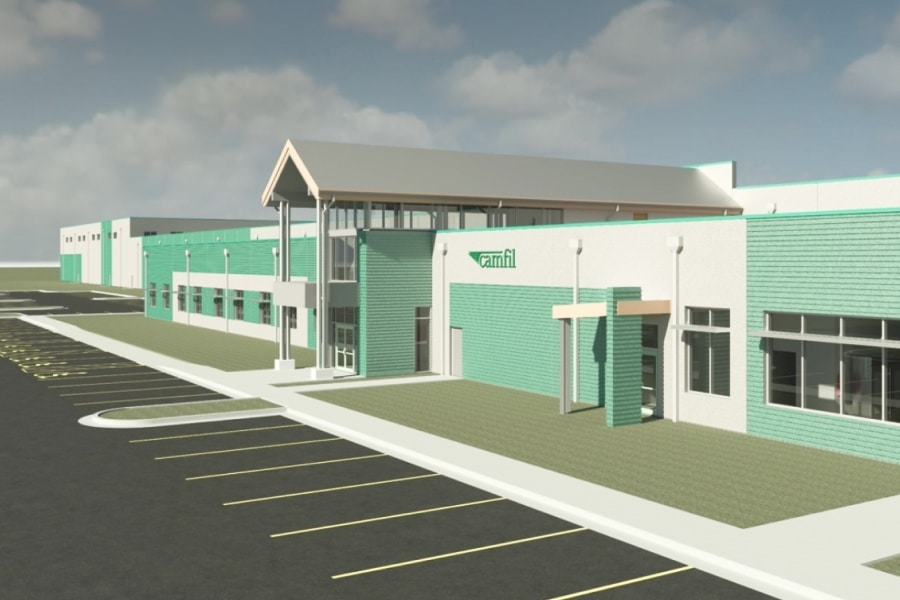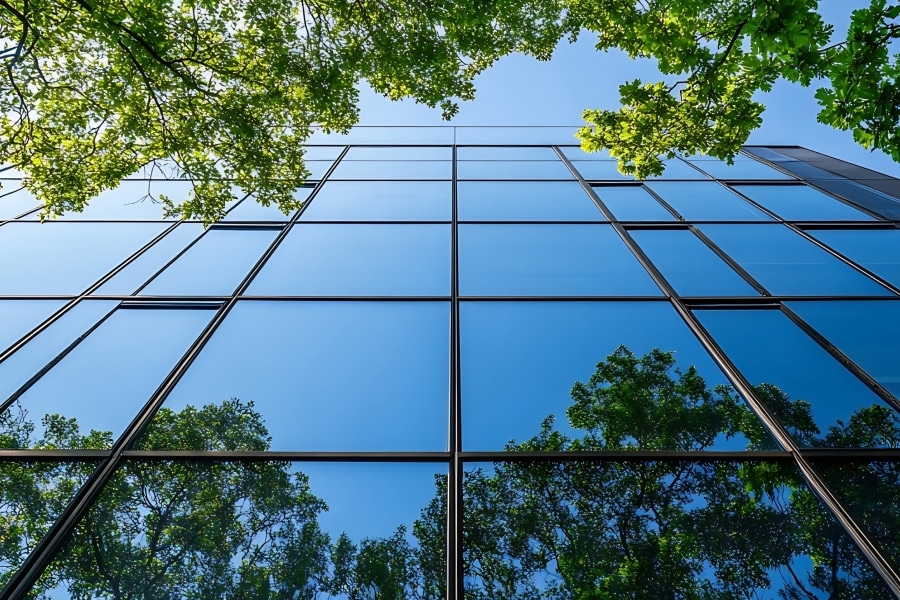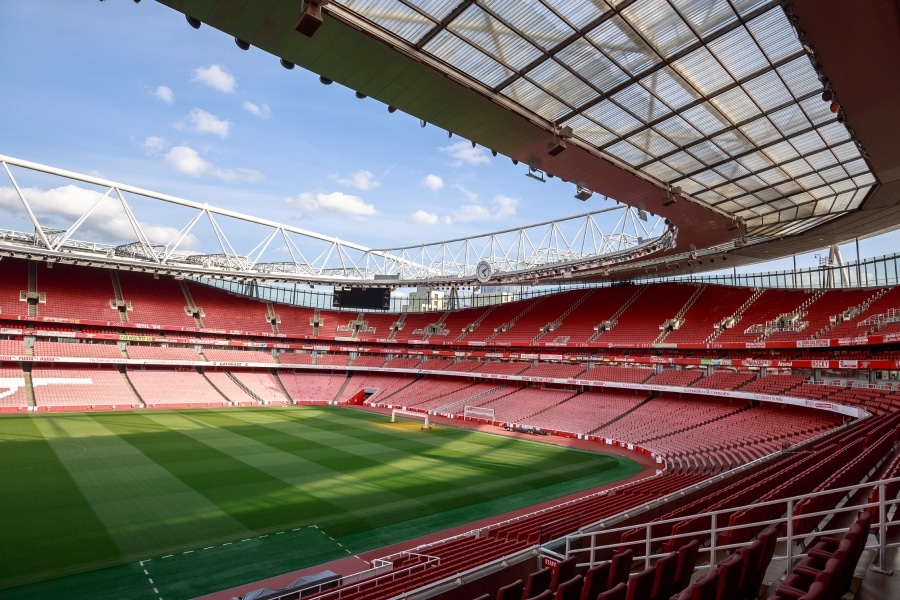Illustration by Lindsay Gruetzmacher
In the world of architecture, design and construction, color is often thought of as a secondary concern.
We all know how important visual characteristics such as light and the handling of space are in a user’s experience. But color is often seen as less significant, something to be added in later stages of planning, when we begin to design a room.
However, color plays a more complex role in human psychology than many may realize, according to Dr. Stephen Westland, a renowned professor of color science at the University of Leeds in England.
“Color is a deceptively simple topic,” Westland said. “And it’s a very nice topic to teach because people love talking about color, so everyone thinks they know something about it. But once you start really getting into color, no matter what background you have when you approach it, you start to find that it’s stretching you in areas that you feel uncomfortable in.”
“Designers have to confront a bit of neuroscience and a bit of psychology,” Westland added, “and people working in physics have to start thinking about philosophy, or aesthetics and art. It’s an incredibly complex and multi-disciplinary topic.”
Far from being the lighthearted aesthetic consideration most are familiar with, the world of color research has revealed the surprisingly large extent to which color shapes our experience of the built world. “There’s evidence to suggest that color can have some quite extraordinary impacts,” Westland said.
Why color matters
Why is color able to affect us so powerfully?
Part of the answer, according to Westland, lies in the way our brains process light. “Until 20 years ago, we thought the eye only had one function, which was sight,” Westland said. “Then we discovered a new set of photoreceptors in the eye, which sent signals to the center of the brain—the hypothalamus—that controls our hormones and our body temperature, rather than to the back of the brain—the occipital lobe—where vision takes place.”
‘Studies show that if we use dynamic lighting to alter the color of light within an office space, for example, people will become less tired and can concentrate for longer.’
Dr. Stephen Westland, professor of color science at the University of Leeds
Our brain uses these light receptors to train our internal clock, regulating the production of hormones that control our cycles of sleep and alertness. “Before the advent of artificial light, we would have lots of light outside, and in the evening, there was no light apart from maybe a candle or a flame,” Westland said. “But now we make our homes brighter in the evening, as well as using iPads and phones, which produce blue light, effectively telling the body that it’s still daylight.” This prevents the production of melatonin and reduces the amount and quality of our sleep.
Westland said that one solution to the problem of too much blue light is to create integrated lighting systems that can change the color and quality of their output throughout the day. “Dynamic lighting is the idea that you don’t just have the light fixed with intensity and color,” Westland said. “As the day progresses, it gets gradually less and less blue and a little bit warmer,” mimicking the natural cycles of light the body needs to stay alert.
“Studies show that if we use dynamic lighting to alter the color of light within an office space, for example, people will become less tired and can concentrate for longer,” Westland said. Being conscious of the ways we expose our brain to color could have a profound change on the culture and functionality of both office and educational spaces.
A pathway to the brain
Because of the way that our brains process light, color can have a direct and dramatic impact on our well-being and psychological functionality. “There are some effects of color which are quite extraordinary,” Westland said. “In 2011, in Tokyo, they put blue lights on the platforms of 29 subway stations where they had the highest incidences of suicide,” Westland said. “Using the blue lights reduced suicide attempts at these stations by 70%.” This result was so impressive that they’ve put the same kind of blue lights on the platforms of London’s Gatwick train station as well as a train station in Scotland.
There’s also evidence that colored light can bypass the neural pathways that cause physical, as well as mental, pain. “There was a study recently at Oxford University where they exposed migraine sufferers to narrowband colored light,” Westland said. “And they discovered a particular hue of blue green light, the same color of the light which activates the hypothalamus, and it made their headaches better.”
Westland said we can envision a future where a migraine sufferer might turn their in-house green light treatment station on instead of popping an aspirin—and obtain the same pain-reducing result.
Building in full color
Despite its many benefits, Westland said that color is one of the least-studied aspects of the physical environment, even though it is one of the most frequently discussed by the actual users of built spaces. Color nevertheless remains the topic of some of the most optimistic claims about morale and efficiency.
“We’re fairly confident that wall color could probably bring some benefits to performance,” Westland said. “And adding more color generally to interiors will have a positive impact on the user’s well-being.”
Westland said that architects, designers and builders need to think more about the impact of color when they begin to design and construct a new structure.
“Color is often not put into the design of buildings because it incurs an additional cost, though that cost might be quite small compared to the benefits it could bring,” Westland said. “I think it just is being underutilized as a design feature. There are lots of opportunities to use color and lighting more creatively, in offices and homes, both therapeutically for well-being and even for performance benefits.”











